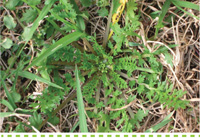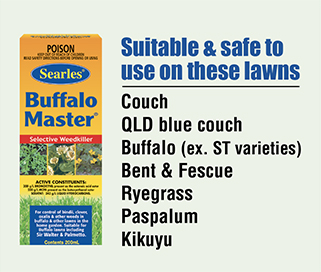What does Capeweed look like and how to control it?
Capeweed is a clumping perennial, ground cover member of the daisy family related to the sunflower growing to nearly sixty centimetres high once fully established.
Recognising capeweed
Capeweed is often overlooked by many with its bright sunny flowers that are attractive to all kinds of beneficial insects, yet has the capacity of taking overvalued pastureland and smothering out endangered native plants. It has distinctive silver-green hairy leaves that are highly segmented and during warm weather, produce many attractive yellow/cream daisy-like flowers that are easily spotted in pastures and along roadsides. It is most commonly found in cooler climates where the winter encourages a strong underground tuber and where summers are dry and humidity is low.
How to control capeweed
Control is best done by applying Searles Buffalo Master during its non-flowering times. (Prior to spring and summer). Once plants have begun flowering, eradication can be difficult during that season as many seeds have been previously scattered. Physical removal of clumps can also help, but ensure that bare patches of soil are quickly replanted with native pastureland species as capeweed will immediately recolonise bare ground.
Note: This product is not suitable for carpet grass lawns and ST varieties of buffalo lawns.
Click to view our Searles Lawn Weed Control chart for the right lawn weed killer to use for your lawn type.
 |

